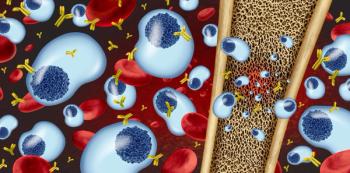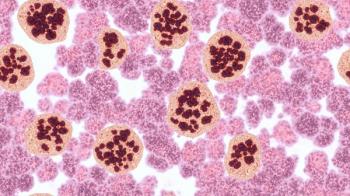The US health care system continues to rapidly change to provide better care, reduce costs, and improve the health of an aging population. With these changes come added pressures on health care professionals, which have harmed mental health and contributed to high rates of burnout, a syndrome characterized by emotional exhaustion, depersonalization, and loss of meaning in work. The diminished well-being of health care professionals is concerning, as burnout has been associated with increased medical errors, decreased patient satisfaction, increased turnover, higher health care costs, and a higher likelihood of substance use or suicidal ideation.1 Although burnout has been a topic of conversation for physicians and nurses for decades, there has been a push to address the extent of burnout found in pharmacists—specifically pharmacy residents—in recent years.
More than 5000 pharmacists are seeking residency training in more than 2000 programs accredited by the American Society of Health-System Pharmacists (ASHP) each year.2 Pharmacy residents rotate through various practice settings throughout the year while managing several additional assignments. In addition to patient care responsibilities, successful completion of a residency program often includes a research or quality improvement project, a medication use evaluation, a staffing component, topic discussions, precepting and mentoring of pharmacy students, and providing continuing education programs and in-service presentations. Many of the tasks assigned are longitudinal and may overlap with daily requirements. The intensive nature of a residency program has resulted in an increased risk of stress leading to high rates of depression and burnout among pharmacists pursuing this path.3
Evaluating the Extent of Burnout Among Pharmacy Residents
A cross-sectional study was conducted in February and March 2012 to examine stress and negative affect levels among 643 PGY-1 and PGY-2 pharmacy residents. This was the first study conducted to evaluate the experience of stress pertaining to pharmacy residents. Researchers utilized an institutional review board–approved questionnaire that surveyed participants utilizing the 10-item Perceived Stress Scale (PSS10) and the Multiple Affect Adjective Checklist–Revised (MAACL-R). Results demonstrated that the number of hours worked per week was a significant predictor of perceived stress, with those who worked more than 60 hours per week being significantly more likely to have higher stress levels than those who worked between 40 and 60 hours per week (P = .001). Additionally, PGY-2 pharmacy residents had a significantly higher MAACL-R hostility score than PGY-1 pharmacy residents (P = .017). Compared with previous studies including medical residents, pharmacy residents experienced similar PSS10 scores (20.3 ± 7.4 vs 19.06 ± 5.90, respectively).4
To evaluate the rate of depressive symptoms among pharmacy residents, a time series study utilizing web-based surveys assessed 678 pharmacy residents completing their training during the 2015-2016 cycle in ASHP-accredited programs. The surveys included 38 questions relating to demographic information, regional location of the residency programs, residency-specific environmental factors (ie, hours worked, preceptor support, number of coresidents, type of residency program), and the 9-item depression screening component of the Patient Health Questionnaire (PHQ-9). Data were gathered in September 2015, December 2015, and March 2016. This study revealed that rates of depressive symptoms (PHQ-9 ≥ 10) did not significantly increase over the course of the year (September 2015: 34% vs March 2016: 39.9%; P > .05); however, severe depressive symptoms (PHQ-9 ≥ 20) increased significantly from 2.9% to 7.3% (P < .05). The proportion of participants who reported PHQ-9 scores below 10 significantly decreased throughout the year, and by March 2016, approximately 40% of pharmacy residents scored 10 or higher on the PHQ-9, indicating at least moderate depressive symptoms with a strong likelihood of major depression.3
The Switch to a "Quadruple Arm"
For decades, health care has focused on achieving the “Triple Aim” of enhancing patient experience, improving population health, and reducing costs. Studies have demonstrated burnout’s negative impact on patient care, resulting in the adoption of a fourth aim. The “Quadruple Aim” encompasses all previous aims, with an additional goal of promoting care team well-being.5 ASHP has recognized the importance of prioritizing well-being and resilience among pharmacy residents, which is crucial to their success, overall health, and ability to provide high-quality patient care. The ASHP Strategic Plan refers to a pillar called “Our Patients and Their Care,” which aims to “improve patient care by enhancing the well-being and resilience of pharmacists (including pharmacy residents), student pharmacists, and pharmacy technicians.” This goal comprises 5 key objectives, one of which is to actively seek opportunities to enhance the well-being and resilience of pharmacists who pursue postgraduate residency training. Furthermore, ASHP has incorporated language regarding well-being and resilience into the Accreditation Standard for Postgraduate Residency Programs since 2023. To promote this concept, ASHP established the Well-Being Ambassador (WBA) Program with funding from the Health Resources and Services Administration.
The ASHP WBA Program certificate is a virtual, curriculum-based program designed to increase one’s knowledge and skills to implement practices enhancing well-being and resilience in their personal lives and within professional practice. ASHP has established a resource guide, highlighting the importance of incorporating WBAs or initiatives into a pharmacy residency program.6
WBAs are dedicated individuals tasked with advocating for and supporting pharmacy residents’ mental, emotional, and physical well-being. They serve as an approachable point of contact for residents to express concerns about their well-being and are knowledgeable about all available resources, nationally and locally. WBAs should undergo comprehensive training, including education on mental health and crisis intervention. WBAs are responsible for organizing activities and events to reduce stress and promote self-care, which may include mindfulness sessions, stress management workshops, and social events to foster a sense of community and support within the department.7
Integrating Well-Being Into a Residency Program
The first step in establishing a wellness initiative within a residency program is identifying risks to well-being and resilience. It is also important to measure baseline well-being using at least 1 validated tool (eg, Maslach Burnout Inventory, Mayo Well-Being Index, Stanford Professional Fulfillment Index, Mini Z burnout assessment). Although each tool may vary slightly, they have all been created to assess stress, meaningfulness from work, depersonalization, and emotional exhaustion.8 The 2023 ASHP Accreditation Standard for Postgraduate Residency Programs updated the requirements of individualized development plans to include a well-being and resilience component, which remains in place today.9,10 Assessment and documentation of resident well-being are required during the initial developmental plan and at least every 90 days thereafter. Validated screening tools may provide a subjective assessment of resident burnout and allow program directors or preceptors to identify changes in burnout throughout the year.9
Before a well-being initiative can be successfully incorporated into a residency program, leaders must express their support by becoming wellness champions. This may include the department manager, residency program director, residency program coordinator, and preceptors. Leaders committed to creating a respectful and safe work environment have been found to positively impact their workforce. A study conducted by Harvard Business Review surveyed more than 19,000 people at all levels from various industries to determine how workers may be more satisfied and productive. This study found that those with respectful leaders reported 56% better health and well-being, 1.72 times more trust and safety, 89% greater job enjoyment and satisfaction, and 1.26 times more meaning and significance.11,12
Creating a wellness program within the department or organization requires shared accountability among all participants. Shared accountability means that the responsibility for well-being is not solely on the wellness ambassador but is embedded within the operational structure at all levels. With shared accountability, the “Quadruple Aim” may be attainable.8 It is crucial that leadership is present during well-being activities to show interest in promoting resident wellness and support the development of a wellness program that may withstand operational changes.
The PGY-1 pharmacy residency program at the University of California implemented a resident wellness program in 2019. The program focuses on resilience, self-management, and community to promote the health and success of residents while minimizing burnout. Residents must participate in monthly interactive seminars, practice introspection through written reflections and discussions, develop a personal mission statement, teach and model resiliency skills, and participate in team-building activities. A total of 31 residents participated in the wellness program, and their responses to feedback surveys were analyzed to provide insight into the program’s impact. Ninety-seven percent of participants reported that the wellness program was relevant to their needs as pharmacy residents. Most participants agreed that the program provided tools to develop self-care skills. Written reflections from participants noted that the program director’s commitment to resident wellness was a motivating factor and helped promote a sense of meaning at work.
The results of this pilot program support the development and implementation of wellness programs within pharmacy residency to assist new practitioners throughout the demands of residency, enabling them to excel in pharmacy practice. The evaluation of this wellness program provided additional insights into potential barriers to implementing a WBA or program at other sites. Residency administrators must recognize the logistical components required to manage a wellness program, such as reserving time in the residents’ and ambassadors’ schedules, developing educational content, and receiving feedback on program offerings to nurture future growth. Establishing a program of this magnitude may take considerable time, effort, coordination, and labor.8 Furthermore, recruiting guest speakers or mental health professionals may pose a challenge. It may be beneficial to create a wellness task force during the program’s conception before appointing a single WBA.
The following principles may help guide the implementation of a wellness program within a pharmacy residency:
- Identify opportunities to provide education on well-being and resilience to all pharmacists or other health care professionals associated with the residency program. All parties must understand burnout syndrome, and the risks and mitigation strategies for residents.
- Obtain input from all levels, including past residents, on risks of burnout and ideas for helpful wellness offerings throughout the year.
- Utilize multiple tools to assess baseline levels of burnout and several checkpoints throughout the year.
About the Authors
Jessica Russo, PharmD, MBA, is an ambulatory care pharmacist at AdventHealth in Central Florida, specializing in medication optimization in different clinical settings. She is a full-time practitioner and preceptor to pharmacy residents and students.
Raechel Lozano, PharmD, BCACP, is a board-certified ambulatory care pharmacist and PGY-2 residency program director at AdventHealth Celebration in Florida. In addition to managing various outpatient clinics, she is a preceptor and mentor for residents and pharmacy students.
Kimberly Finley, PharmD, BCACP, is a board-certified ambulatory care pharmacist, clinical manager, and PGY-1 residency program director at AdventHealth Celebration in Florida, where she oversees several outpatient clinics.
- Recognize areas for intervention (eg, workflow improvements, consecutive hours worked, number of projects assigned throughout the year, access to mental health resources, team engagement activities, mindfulness exercises, self-reflection).
- Implement programs with a small group before rolling out more broadly, as interventions created to mitigate resident burnout may apply to pharmacists at all levels.8
- Create a comprehensive feedback tool to continually evaluate implemented programs.
- Transparently share feedback to gain insight into strategies to improve interventions.
Conclusion
Incorporating well-being initiatives into a pharmacy residency program is a proactive approach to prioritizing resident well-being and is imperative to safeguarding the mental and emotional health of future pharmacists. By utilizing ASHP guidelines and implementing the strategies outlined in this article, residency programs can create a supportive environment that nurtures resilience and combats burnout. As the landscape of health care continues to evolve, prioritizing the well-being of pharmacy residents has become increasingly crucial. A commitment to fostering a culture of care and resilience will ensure that pharmacy professionals are equipped to be successful in their roles and provide exceptional patient care.
REFERENCES
ASHP 2024 Match Statistics. National Matching Services. Accessed April 10, 2024. https://natmatch.com/ashprmp/stats.html
Williams E, Martin SL, Fabrikant A, Wang A, Pojasek M. Rates of depressive symptoms among pharmacy residents. Am J Health Syst Pharm. 2018;75(5):292-297. doi:10.2146/ajhp161008
Le HM, Young SD. Evaluation of stress experienced by pharmacy residents. Am J Health Syst Pharm. 2017;74(8):599-604. doi:10.2146/ajhp150763
Bodenheimer T, Sinsky C. From triple to quadruple aim: care of the patient requires care of the provider. Ann Fam Med. 2014;12(6):573-576. doi:10.1370/afm.1713
ASHP Resource Guide for Well-Being and Resilience in Residency Training. American Society of Health-System Pharmacists. Accessed April 10, 2024. https://www.ashp.org/-/media/assets/professional-development/residencies/docs/ASHP-Well-Being-Resilience-Residency-Resource-Guide-2023.pdf
Rath CG, Lapetina PE, Reed J, Vogt E, Brown M. Roadmap to resilience: incorporating a wellness program into the pharmacy residency curriculum. Curr Pharm Teach Learn. 2022;14(6):751-757. doi:10.1016/j.cptl.2022.06.006
Sinsky CA, Biddison LD, Mallick A, et al. Organizational evidence-based and promising practices for improving clinician well-being. NAM Perspect. 2020;2020:10.31478/202011a. doi:10.31478/202011a
Comparison and crosswalk of current ASHP residency accreditation standards to the ASHP 2023 Accreditation Standard for Postgraduate Residency Programs. American Society of Health-System Pharmacists. December 28, 2022. Accessed April 6, 2024. https://www.ashp.org/-/media/assets/professional-development/residencies/docs/crosswalk-all-standards-2023.pdf
ASHP Accreditation Standard for Postgraduate Residency Programs. American Society of Health-System Pharmacists. Updated September 20, 2024. Accessed March 25, 2025. https://www.ashp.org/-/media/assets/professional-development/residencies/docs/examples/ASHP-Accreditation-Standard-for-Postgraduate-Residency-Programs.pdf
Swartz T, Porath C. The power of meeting your employees’ needs. Harvard Business Review. June 30, 2014. Accessed April 16, 2024. https://hbr.org/2014/06/the-power-of-meeting-your-employees-needs
Porath C. Half of employees don’t feel respected by their bosses. Harvard Business Review. November 19, 2014. Accessed April 16, 2024. https://hbr.org/2014/11/half-of-employees-dont-feel-respected-by-their-bosses





















































































































































































































